Video Analysis: Atalanta’s possession system
Just by looking at the numbers, we can see that Atalanta is 3rd (70) in goals scored – after PSG (75) and Bayern (73)- amongst the top 5 league teams, and 1st in shots per game, leading with 20,1 attempts -just for comparison, Barcelona have 12,7 (scored 63), Dortmund have 13,8 (scored 68), Juventus have 17,5 (scored 50), and the closest is Manchester City with 19,4 (scored 68). As these numbers looks very intriguing, this analysis will focus on their strategy in possession (link can be found at the end of the article).
For every main aspects, the video analysis contains clips for better visual understanding, meanwhile some of the key things will be written for a more in-depth analysis. Their basic system/structure is a 5-2-1-2/3-2-1-4 in possession (sometimes switching to a 5-2-3/3-4-3), with a heavy focus at the wider areas.
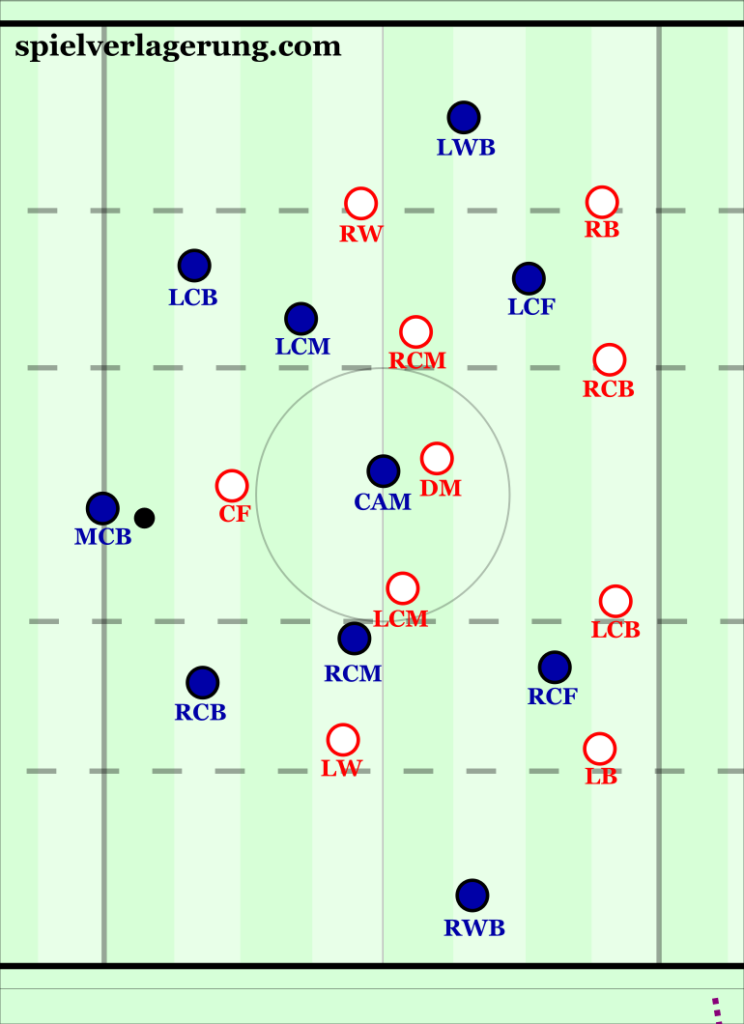
Most of their movements, principles are based on penetrating the oppositional defenses mainly wide/or halfspaces, with a lack of central occupation, since not only their central-midfielders are orientated to make movements towards the wider zones, but also their centre-forwards. In this way they often create a spacing with 4-5 players wide (flanks & halfspaces) on the near side. Although this not only happens on the near-side, but on the far-side as well. Meanwhile the team has the ball on one side, the ball-far players are still positioned wide, expecting a possible switch of sides to make an overload again -plus to stretch the defense by staying wide. This means the central lane is their least used zone in possession basically.
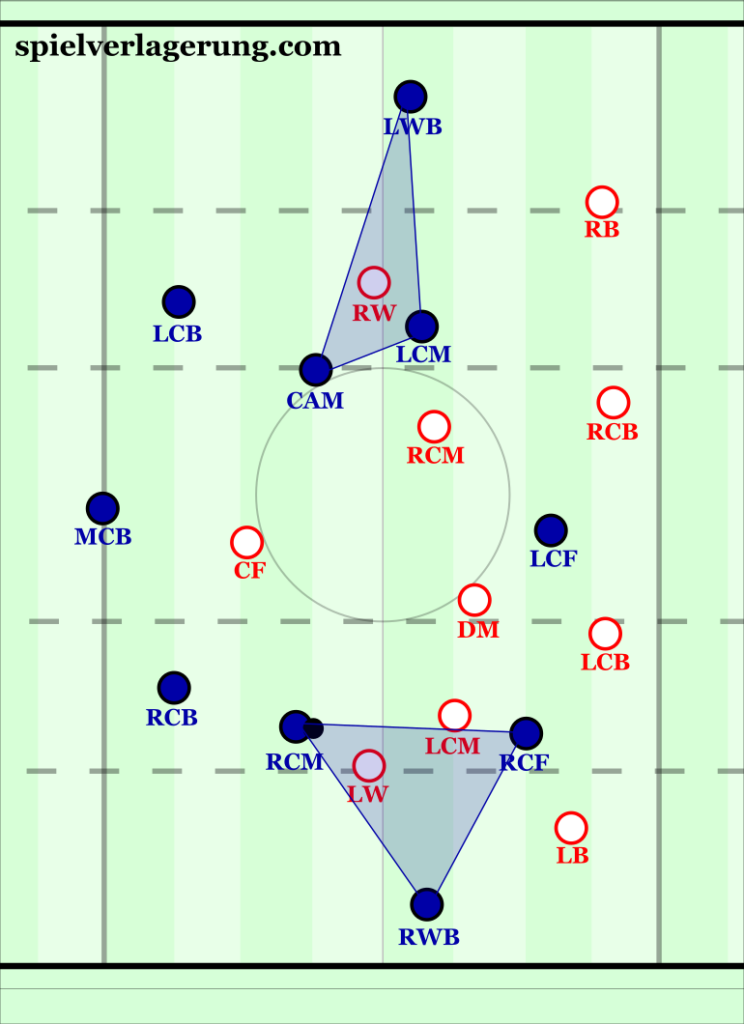
What makes their system special is the different usage of specific positions – individual instructions:
–wing-backs -› mostly stay high & wide – if the CFs are moving wider for an underlap, move inside to offer depth in the halfspace – flexibility, generally -move inside if halfspace depth is not occupied
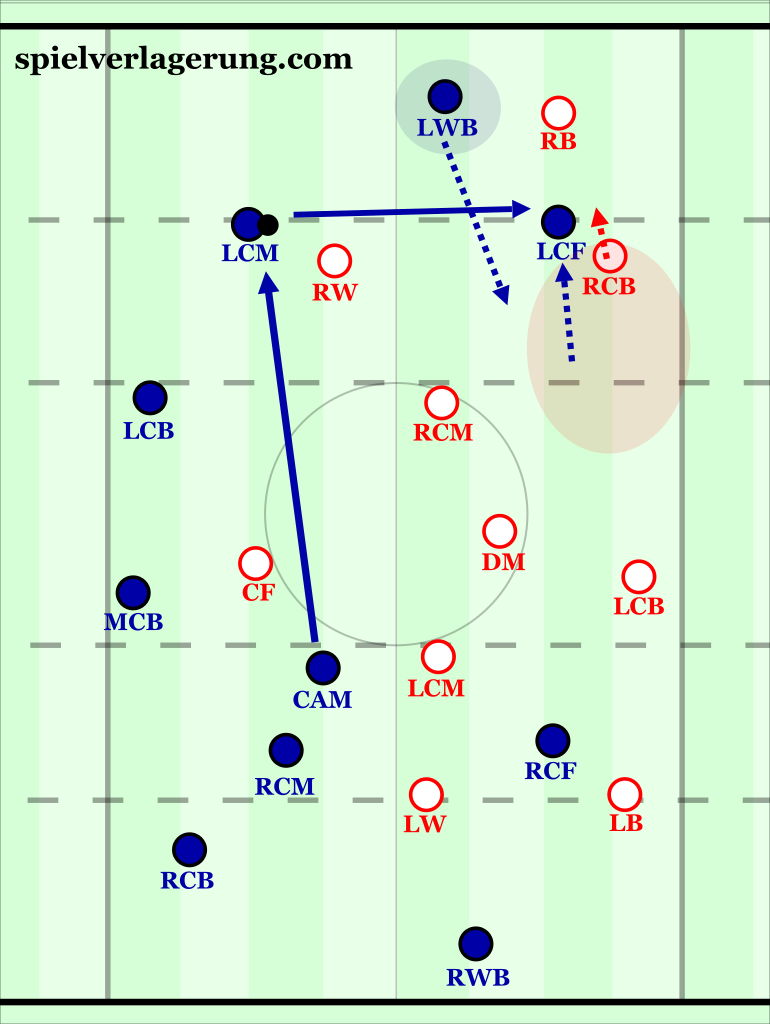
–wide centre-backs -› if a CM drops on your side, move wider & act as a deep full-back/ if CM is inside & CF moves very wide -› make a run from depth after a pass wide to offer option between the lines & CM to drop to your initial position
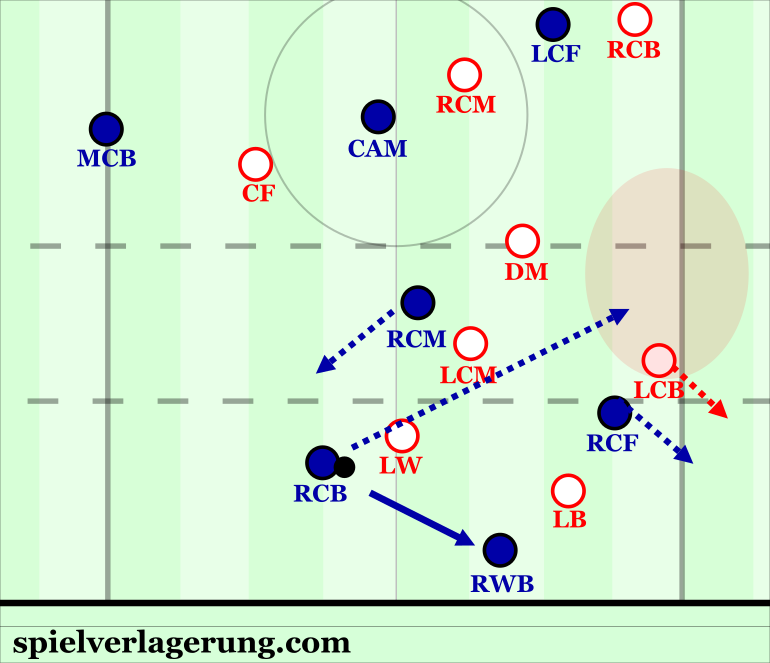
–central-midfielder -› whilst circulating at the back – drop between MCB-wide CB in halfspace/if wide CB makes a run drop into his position at the back/ if wide CB drives forward on the ball – stay inside more / if halfspace in depth is unoccupied (look for CF’s positioning)- move higher between the lines
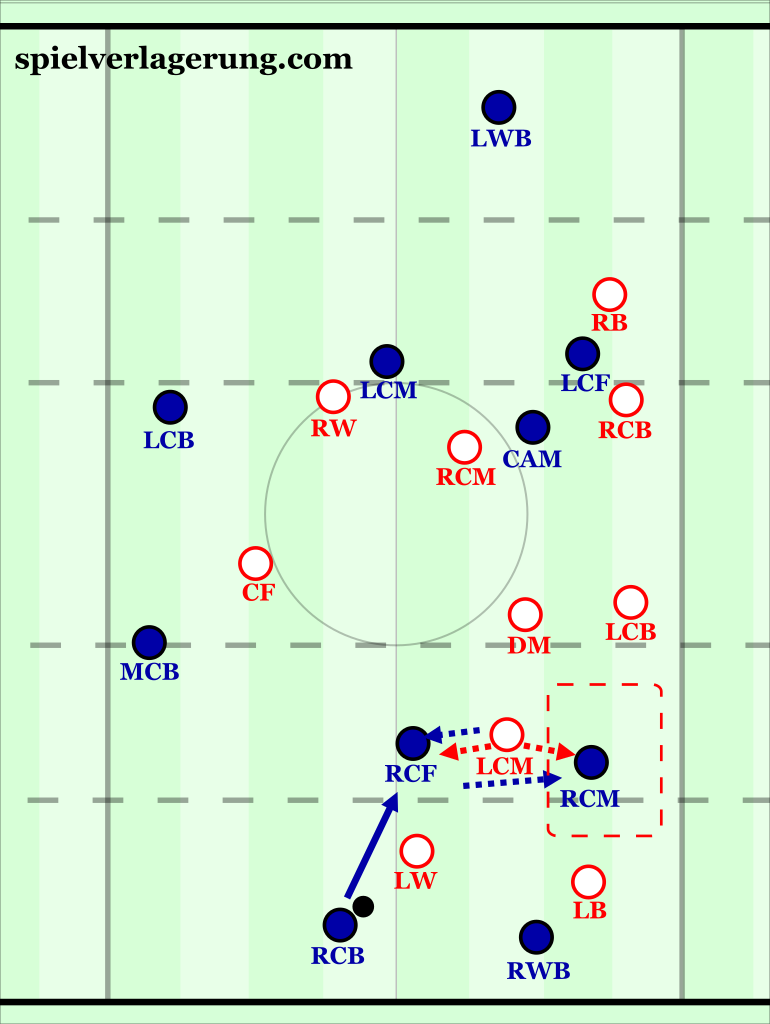
–attacking-midfielder (Papu Gómez) -› only player with a more centrally-oriented positioning, very flexible role, often staying deep in front of the oppositional 2nd line, from where he make runs between the lines from depth/if system change for a 5-2-3 – operating mostly in the left halfspace + positional rule: if LCF more central, move wider and vice versa
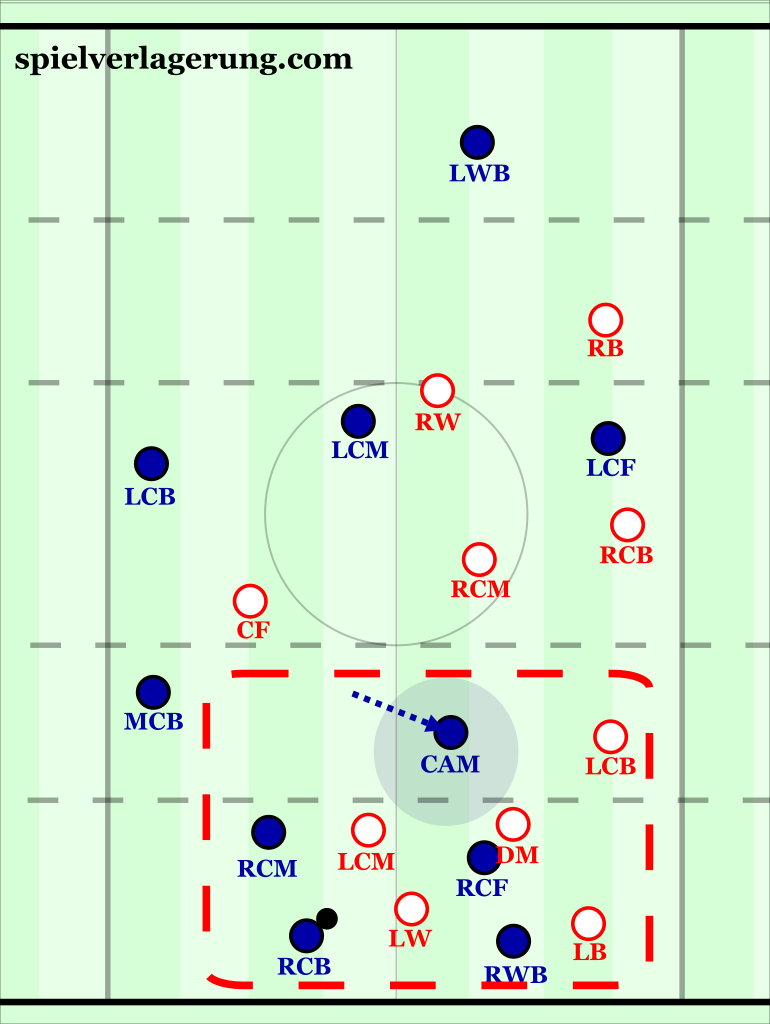
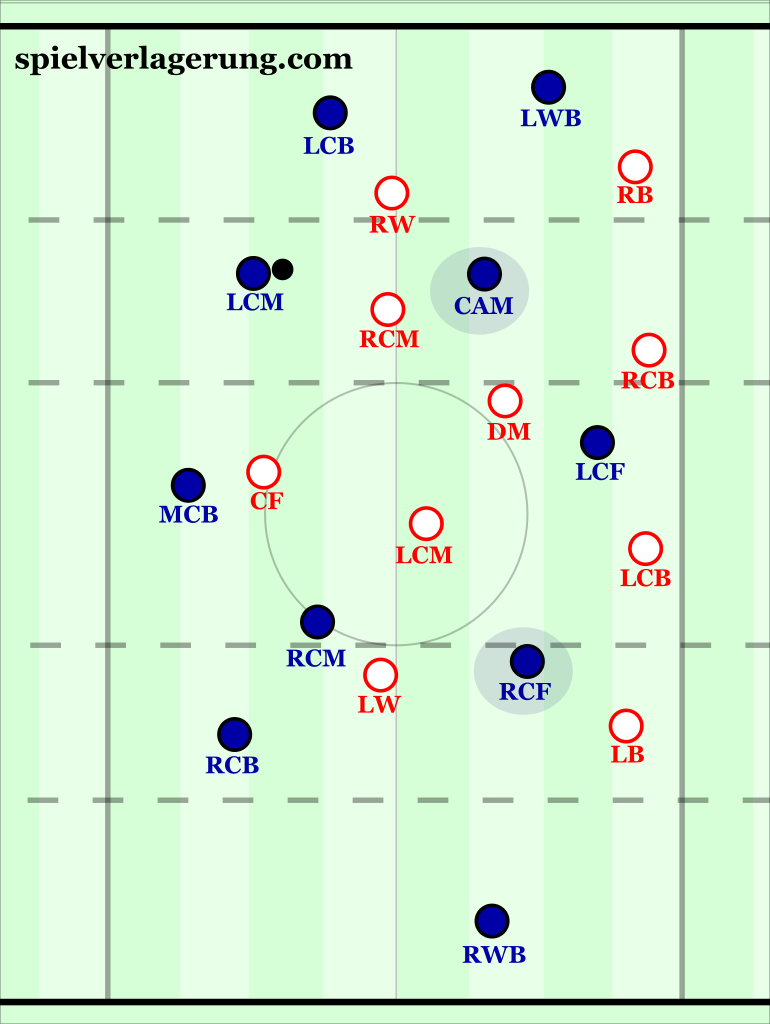
–centre-forwards -› mostly moving out wider to the halfspaces to offer depth for the wide dynamics & making underlap runs -› stay wide after underlap run + positional rule: if CM moves higher, move more inside to open the halfspace for the CM between the lines
Wide dynamics – rotations
One of their most used wide movement is the switch between the CMs & wide CBs: as the CMs’ drop in the halfspaces, the wide CBs immediately move out wider to create a double width with the high wing back. This wide overload manipulates the oppositional wide cover: since the wide CBs now act as deep full-backs, it forces the oppositional wingers to stay deep preventing an often used defensive scheme to press the back 3 & wide CBs with higher wingers. Meanwhile the dropping CM often pulls out the oppositional CM from the centre, reducing the cover in the halfspaces, where the wide CF is positioned. From a defensive point of view this is still not a terrible situation, since the centre is mostly unoccupied, so it’s no issue if the CBs are shifting wider than normal, to cover the wide CFs. Although this is exactly an advantage to use offensively: if the CBs are shifting very wide it will either stretch the last line & creating gaps, or forces the whole line to be even more ball-oriented with the shifting than normally, creating ballfar wide spaces. Another offensive solution comes up here: rotations. As the ball goes wide, the CFs are making underlap runs outwards, mostly covered by the CBs, though rather than moving back to the initial positions after the movements, now the CF stays out wide, and the halfspace is either occupied by the wing-back or even by the wide CB/CM -depending on situation, mostly by the WBs. These rotations cause immediate shifting issues for the defensive side, since whilst their main orientation is to move back to the initial positions, spaces might open up for the attackers. From now on these rotations are mostly self-organized, with clear principles: the pre-determined positions must always be occupied. This principle offers flexibility within the system, and since during the wide possession a run behind is very frequent, there is always a trigger to start the rotations.
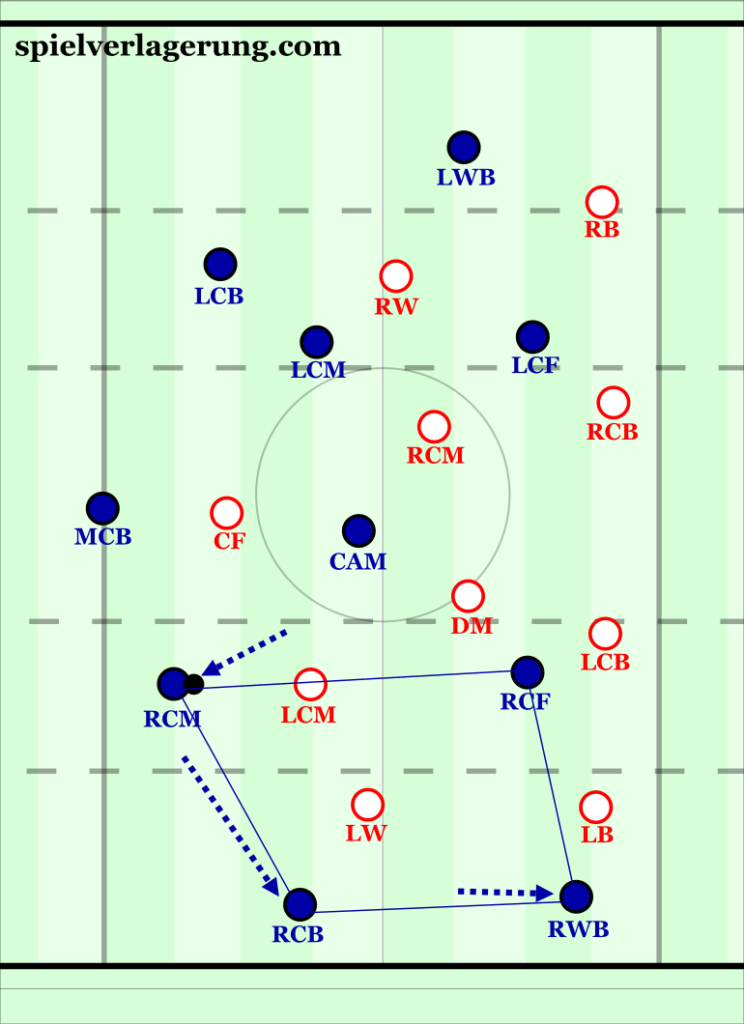
Based on the wide positioning, most of their penetrations happen in these zones, therefore the constant width & depth offered on ball-far spaces is essential, in order to have options inside the box. In the advanced zones the positional basis is to attack with optimally at least 5 players – 2 WBs, 2 CFs, CAM/or 1 CM -, although the rotations might create such structure, where 6 players are occupying these zones, increasing the possible number of options. This is mostly based on the speed of the attack & oppositional depth, as for example, if they succeed to penetrate wide from the middle-third, there won’t be enough depth to arrive -due to the wide-oriented positioning-, so often only 2 players inside, although after stretching the oppositional last line, meaning the space is increased inside the box. Another interesting effect of the wide rotations comes up here, as the system offers flexibility, the emphasis is to occupy certain positions, not on who occupies them – of course, there is a huge strategical value to put players in positions where they are able to operate well-, so either wide CBs might occur in positions to arrive into the box from a positional attack.
Possible weaknesses/issues
In the initial phases there are several players to drop deeper -CMs + CAM- to circulate the ball, mostly in a 3-3-4 staggering. As compact as defenses becoming lately, having only 2 CFs between the lines might not be enough to effectively break a mid-or low-block. Plus, based on the wide overloads, if the defense can neutralize the wide movements well, the possession often forms the classic U-shape without any penetration in the advanced zones. Leaving the centre unoccupied is another possible issue: without that the 2 wide spaces are often disconnected from each other, no access to reach far-side with switches for example. This is definitely where they could develop further, to have a better switching mechanism between the wide zones, to exploit the ballfar spaces. The zone where this looks much more fluent is the attacking third, where the CMs are moving more inside & CAM as the 3rd of an imaginary chain, to offer connections for switches from one side to the other.
Also, it looks pretty clear, that the back 5 offers an optimal solution against the wide combinations. If we look only at the numbers from 2020 games: from 11 games they’ve played 5 times against a back 4 -won all 5-, 6 times against a back 5 -won only 2. Versus a back 4 they scored 22 from 5 games (4,4 per game average), although versus a back 5 they scored 12 in 6 games (still a decent 2 per game average, but significant difference). From a tactical point of view, a back 5 allows the last line to shift wide more aggressively, without stretching the last line to open gaps, plus offers support behind a wide CB, which space is often exploited by the movements – therefore it’s generally harder to create wide overloads.
Video link: https://www.dropbox.com/s/a9esjppg0jdekc0/Atalanta_Possession%20System%20Analysis.mov?dl=0
5 Kommentare Alle anzeigen
ahan jain June 30, 2024 um 7:14 am
Link no longer works
Emmanuel August 27, 2020 um 6:41 pm
Sorry; the link no longer works.
Mark Haghani March 30, 2020 um 7:01 pm
I wonder how I would defend against such routines? These obviously work great against man-marking systems (pulls players out of position) and zonal systems (creates overloads on flanks)??
Emmanuel April 1, 2020 um 4:47 pm
Atalanta’s circulation dynamics are pretty extreme because of the lack of central presence. 5-3-2 and high pressing from a 4-diamond-2 have proved most successful systems against Gasperini but honestly the numbers are frightening
Emmanuel March 29, 2020 um 4:55 pm
Finally! Please do Sheffield United as a point of comparison